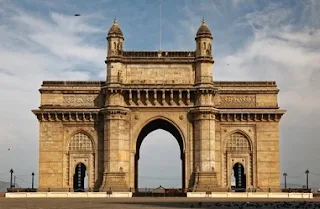Gateway of India History
Historical Background of Gateway of India
Gateway of India is an iconic monument located in Mumbai, India, representing the colonial past of the city as well as playing an important role in its port activities. A brief history of it is as follows:
A symbol of many things, the Gateway of India is:
- Colonial legacy- This means it talks about the British colonial period in India and reminds us of the visit by King George V and Queen Mary in 1911 which was an important time for India.
- Architectural Fusion -The monument exhibits a one-of-a-kind mixture of Indo-Saracenic architecture that portrays the cultural amalgamation between Indian and Islamic styles.
- A mark of National Pride - The Gateway became a mark of national pride and resilience after India’s independence in 1947, representing both an end to colonial rule as well as the rise of a free nation.
- Point of Entry and Exit- It has been used as the ceremonial entrance for important persons and the final departure point for British forces marking historical movements.
- Entry and Exit Point: It was actually used for ceremonies of the great men who came to the nation and also the last point for those British soldiers who were leaving this land.
- Cultural Significance: Presently, this place is one of the major tourist spots in Mumbai which reflects its liveliness as well as the importance of history behind it.
Construction and Purpose:
- Built to honor King George V and Queen Mary’s visit in 1911: It was the first time a British monarch set foot on Indian soil. But laying of its foundation stone was done in 1913, and completion work took place later till 1924.
- Designed by George Wittet who officiated the project. Being served as an official route into India for outgoing British dignitaries and representing British reign over India; this structure served differently at times.
Type of Architecture:
- The Gateway of India, which has Indo-Saracenic architecture as its goal, is a fusion of Hindu and Islamic styles based on the British period when it was most popular.
- Its arch rises to a height of 26 meters (85 feet) and enclaves the yellow basalt as well as a reinforced concrete material. The decorations that adorn it and the lattice work are well done and elaborate thus implying mastery in such craftsmanship during that period.
Political and Social Importance:
- British administrators arriving in India via what they were told (Gateway) grew to embody this colonial strength. Also, after India got her independence from Britain in the year nineteen forty-seven, it became the point through which the British army left, ending their rule.
- On February 28, 1948, the last British troops to leave India, the First Battalion of the Somerset Light Infantry, departed through this monument.
The meaning of today:
The Importance Today of Gateway of India
The contemporary significance of the Gateway of India is very great in historical and cultural terms.
Here is its modern-day importance:
- An Iconic Landmark and Tourist Attraction:
- Gateway to India is a popular landmark in Mumbai as well as an important sightseeing spot attracting tourists from abroad as well as local travelers. Its enormous size has made it a symbol for many people who daily visit this place hence being a part of Mumbai’s identity.
- Currently, Gateway of India is a famous tourist destination that represents Mumbai's cultural heritage. It can be found beside major historical monuments like the Taj Mahal Palace Hotel overlooking the Arabian Ocean.
- The Gateway is also recognized as an emblem of India’s colonial era as well as its freedom, serving both residents and visitors from abroad.
- Frequently, various cultural events, public ceremonies, and celebrations are hosted in the open space around the Gateway. Besides, political rallies and memorials have also taken place there, making it very significant as a commonplace.
- The Gateway overlooks the Arabian Sea which commemorates Mumbai’s status as an important port city and a vital trade center. It is also a historical point of entry into India for those who come through water.
At present, the Gateway of India is a historical monument and a living symbol of Mumbai’s sparkling spirit and its designation as a portal to the globe.
In terms of cultural, historical, and architectural context it remains one of the most photographed places in the country.
Frequently Ask Questions
What is the architectural fashion of the Gateway of India?
The Gateway of India was constructed as a tribute to the visit of King George V and Queen Mary to India in 1911. Additionally, it was planned to be used mainly by British dignitaries arriving in the country.
What does the Gateway of India look like architecturally?
Indo-Saracenic architecture encompasses both Hindu and Islamic design elements that reflect an amalgam of Indian, Mughal, and Western styles.
What present-day significance can we attribute to the Gateway of India?
The Gateway of India is now seen as a symbol of Mumbai’s culture; it is one of the most popular tourist attractions in India and serves as a reminder of colonialism and independence. Besides, this monument hosts numerous socio-cultural events.

Comments
Post a Comment